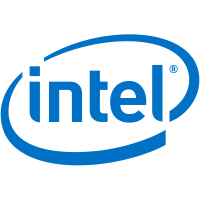NVIDIA RTX A4500 Mobile vs AMD Radeon RX 6800S
Comparative analysis of NVIDIA RTX A4500 Mobile and AMD Radeon RX 6800S videocards for all known characteristics in the following categories: Essentials, Technical info, Video outputs and ports, Compatibility, dimensions and requirements, API support, Memory. Benchmark videocards performance analysis: Geekbench - OpenCL, PassMark - G2D Mark, PassMark - G3D Mark, 3DMark Fire Strike - Graphics Score.
Differences
Reasons to consider the NVIDIA RTX A4500 Mobile
- Videocard is newer: launch date 2 month(s) later
- Around 3% higher texture fill rate: 276.0 GTexel/s vs 268.8 GTexel/s
- 2.9x more pipelines: 5888 vs 2048
- 2x more maximum memory size: 16 GB vs 8 GB
- Around 47% better performance in Geekbench - OpenCL: 107601 vs 73115
| Specifications (specs) | |
| Launch date | 22 Mar 2022 vs 4 Jan 2022 |
| Texture fill rate | 276.0 GTexel/s vs 268.8 GTexel/s |
| Pipelines | 5888 vs 2048 |
| Maximum memory size | 16 GB vs 8 GB |
| Benchmarks | |
| Geekbench - OpenCL | 107601 vs 73115 |
Reasons to consider the AMD Radeon RX 6800S
- Around 94% higher core clock speed: 1800 MHz vs 930 MHz
- Around 40% higher boost clock speed: 2100 MHz vs 1500 MHz
- A newer manufacturing process allows for a more powerful, yet cooler running videocard: 7 nm vs 8 nm
- Around 40% lower typical power consumption: 100 Watt vs 140 Watt
| Core clock speed | 1800 MHz vs 930 MHz |
| Boost clock speed | 2100 MHz vs 1500 MHz |
| Manufacturing process technology | 7 nm vs 8 nm |
| Thermal Design Power (TDP) | 100 Watt vs 140 Watt |
Compare benchmarks
GPU 1: NVIDIA RTX A4500 Mobile
GPU 2: AMD Radeon RX 6800S
| Geekbench - OpenCL |
|
|
| Name | NVIDIA RTX A4500 Mobile | AMD Radeon RX 6800S |
|---|---|---|
| Geekbench - OpenCL | 107601 | 73115 |
| PassMark - G2D Mark | 724 | |
| PassMark - G3D Mark | 15757 | |
| 3DMark Fire Strike - Graphics Score | 1689 |
Compare specifications (specs)
| NVIDIA RTX A4500 Mobile | AMD Radeon RX 6800S | |
|---|---|---|
Essentials |
||
| Architecture | Ampere | RDNA 2.0 |
| Code name | GA104 | Navi 23 |
| Launch date | 22 Mar 2022 | 4 Jan 2022 |
| Place in performance rating | 143 | 146 |
Technical info |
||
| Boost clock speed | 1500 MHz | 2100 MHz |
| Core clock speed | 930 MHz | 1800 MHz |
| Manufacturing process technology | 8 nm | 7 nm |
| Peak Double Precision (FP64) Performance | 552.0 GFLOPS (1:32) | 537.6 GFLOPS (1:16) |
| Peak Half Precision (FP16) Performance | 17.66 TFLOPS (1:1) | 17.20 TFLOPS (2:1) |
| Peak Single Precision (FP32) Performance | 17.66 TFLOPS | 8.602 TFLOPS |
| Pipelines | 5888 | 2048 |
| Pixel fill rate | 144.0 GPixel/s | 134.4 GPixel/s |
| Texture fill rate | 276.0 GTexel/s | 268.8 GTexel/s |
| Thermal Design Power (TDP) | 140 Watt | 100 Watt |
| Transistor count | 17400 million | 11060 million |
| Compute units | 32 | |
Video outputs and ports |
||
| Display Connectors | Portable Device Dependent | Portable Device Dependent |
Compatibility, dimensions and requirements |
||
| Interface | PCIe 4.0 x16 | PCIe 4.0 x8 |
| Supplementary power connectors | None | None |
| Form factor | IGP | |
API support |
||
| DirectX | 12 Ultimate (12_2) | 12 Ultimate (12_2) |
| OpenCL | 3.0 | 2.1 |
| OpenGL | 4.6 | 4.6 |
| Shader Model | 6.7 | 6.7 |
| Vulkan | ||
Memory |
||
| Maximum RAM amount | 16 GB | 8 GB |
| Memory bandwidth | 512.0 GB/s | 256.0 GB/s |
| Memory bus width | 256 bit | 128 bit |
| Memory clock speed | 2000 MHz, 16 Gbps effective | 2000 MHz, 16 Gbps effective |
| Memory type | GDDR6 | GDDR6 |









